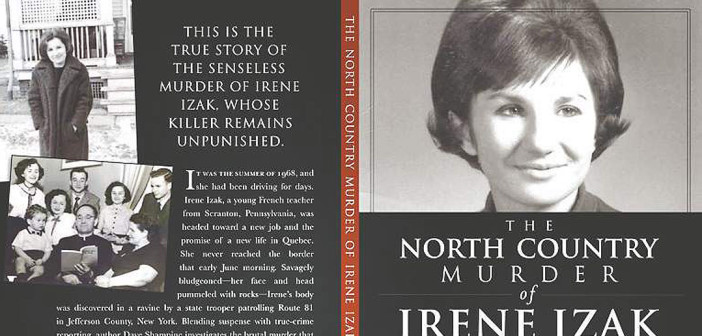Dave Shampine illustrates no murder is small and no life snatched away is insignificant in The North County Murder of Irene Izak: Stained by Her Blood — and he does so with poignant brevity. Shampine is a through-and-through newspaper reporter, and it’s apparent in this brief true crime book: it counts no more than 128 pages (and even less than that is actual narrative) but it’s a story told with such urgency I wasn’t left feeling cheated. This was a real crime and Shampine spent exactly the amount of time he needed to clearly deliver his message.
This book has been on my reading list for the better part of four years. Irene Izak was a Scranton resident and college graduate of Marywood University. Being from the small town of Honesdale, PA, Scranton served as the closest thing I had to a metropolitan escape while growing up and I’ve maintained interest in the area despite not sticking around. When Shampine released the book he had a signing at the St. Vladimir Ukrainian Greek Catholic Church Parish Center, which was covered by the Scranton Times-Tribune. It was a story I cut from the paper and scrapbooked in a collection of news clippings, which still exists in an Olyphant storage unit.
Shampine tells the story of Izak — a Ukrainian refugee who escaped Europe with her family during World War II — who was murdered on 10 June 1968 at the age of 25 during a trip to Montreal. Her intention was to interview for a job teaching French. But when she crossed into the Watertown, NY area she was pulled over by Officer Dave “The Heathen” Hennigan for speeding. She was let go and made it as far as the tollbooth at Thousand Island Bridge.
And there, later on, beyond the guardrails of a nearby rest area Irene’s body was found: she was bludgeoned in the head with no signs of theft or sexual assault. It was Dave Hennigan who made the discovery, and the expected series of events take place. Hennigan calls the murder in, reinforcements arrive, and the investigation begins. I can say now that I’m not spoiling this whodunit by mentioning that Hennigan was looked at closely for this crime. How could he not? There were certain details impossible to overlook:
— Hennigan had bloodstains on his uniform. There was no debate about them being Izak’s: he admitted to inspecting the body, despite that being in breach of protocol and Hennigan’s own judgment earned from his days as a medic in the military.
— Izak was anything but relaxed when she made it to the tollbooth. Shampine’s reporting of the tollbooth operator’s witness testimony captured my attention: this guy is straight out of a Hitchcock film.
— The investigation of the murder began during the night, and Hennigan’s awareness of the body’s location was exact despite the all-encompassing darkness.
There were far more incriminating bits of information, and they all led to Hennigan’s questioning, but due to tight lips and spousal intervention, nothing ever stuck. But the fog of suspicion never quite cleared, either.
The story and all of its details turned into an obsession for Shampine, a longtime crime reporter for the Watertown Daily Times. Three decades after the murder Shampine wrote a series of stories reviving the unsolved case with the help of Izak’s surviving family. And those reports turned into this book.
Especially interesting about the structure of the story are the shifts in focus. Shampine take the time to outline Irene’s youth emigrating to American from war-torn Europe, followed by the quintessential timeline leading up to the murder (which he should be credited for writing with a hard-boiled flair), and he even then crosses into memoir territory as his reporting intersects with the lives of Irene’s family.
Here’s a potential spoiler that doesn’t greatly affect an understanding of the story told: Dave Hennigan died before any final attempt could be made in figuring out if he played a part or not (though it’s not difficult to deduce that Shampine believes he certainly did). And before that he retired from the force and became a Catholic deacon. The cynic in me asks why. The armchair investigator in me knows why.
True crime stories have an elemental structure of victims and criminals, good guys and bad guys, and the light versus the dark. This one is a little more complicated: someone you’d expect to be the good guy (both as a cop and a man of the cloth) might not be so good. Dave Shampine the reporter guides us through his investigation to try and understand the crime. Dave Shampine the person wants to find some kind of closure both for him and the friends and family of Irene. And I suspect the authorship of The North County Murder of Irene Izak: Stained by Her Blood was his quest in trying to achieve that.




